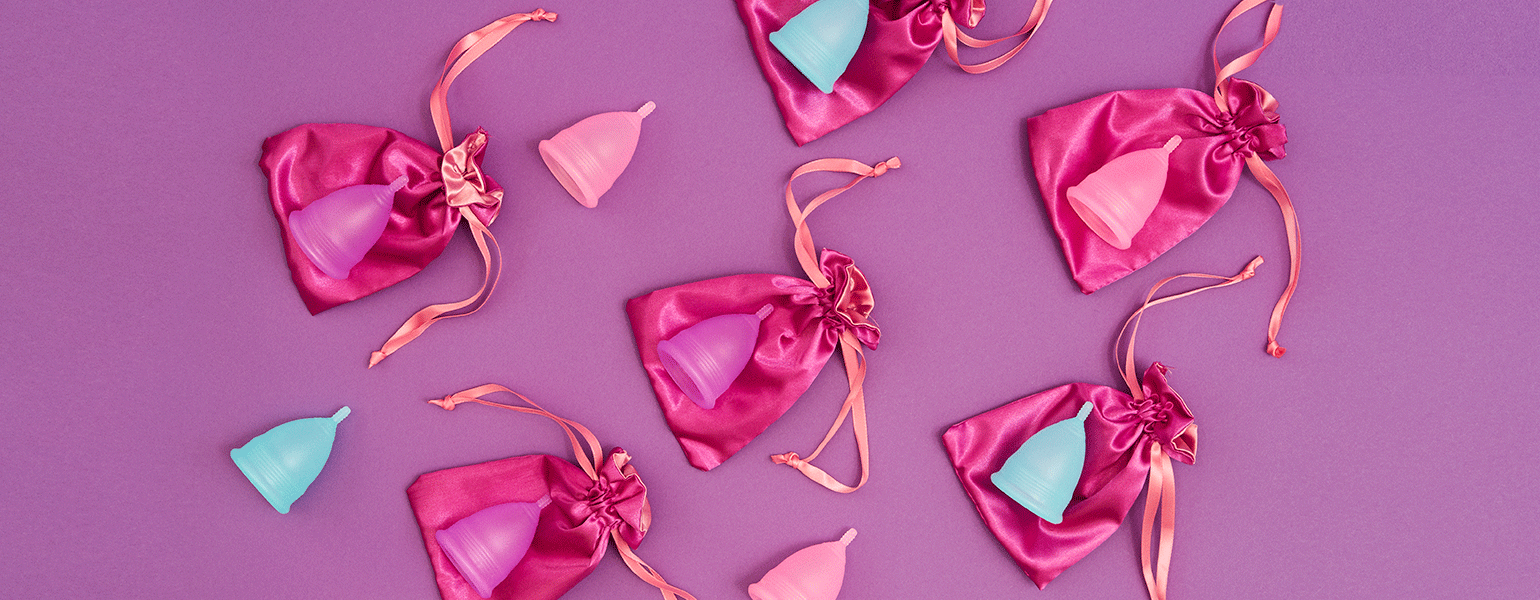If you’re anywhere near perimenopause age, there’s a good chance you may start experiencing heavier-than-normal periods. About 25 percent of midlife women will experience hypermenorrhea and/or menorrhagia (abnormally heavy or long menstrual bleeding), and may soon find that pads and tampons — even those that espouse super absorbency and are for heavy-flow days — just don’t seem to cut it anymore. And interestingly enough, this may be happening at the
same time that your teen daughter or young adult also is having her period and is possibly in the same battle to try and contain heavy bleeding. But it seems a good amount of our young women may be a step ahead of the menstrual game, because for environmental, comfort and cost-conscience reasons, they’re heavily embracing the use of menstrual cups — making them the preferred and popular choice of feminine hygiene for many active women.
So what exactly is a menstrual cup, and how and why would a middle-aged woman want to start using one?
Think diaphragm
If you have ever used a diaphragm as birth control, then you should have a good idea about what a menstrual cup looks like and where it’s supposed be positioned around your cervix. Basically, if you took a diaphragm and made it a bit narrower and deeper (to hold more fluid), you would end up with a menstrual cup. Cups are designed to collect several ounces of menstrual blood with the same barrier method that a diaphragm does — by covering the cervix.
Are there sizes?
Yes! Cups come in different sizes and shapes (though still cup shaped), and what size you need is dependent on a few factors — including age, how many children you have birthed vaginally, and your typical rate or amount of flow. And while cups are available without a prescription and do not require a physician to measure you, some cup manufacturers offer instructions on how to measure yourself in order to find the perfect fit. Keep in mind you may have to try more than one size at first to determine which fits you the best.
Cost?
Compared to what the average woman will spend on pads and tampons during her lifetime (estimated to be several thousand dollars), the cost of a menstrual cup is a mere pittance, averaging around $25.
Isn’t it really messy?
Yes and no. First, the positives: You will notice less (if any) menstrual-blood foul odors, because you won’t have drying blood sitting in a maxi pad against your skin anymore. There are also fewer changing times, so you’re not running to the bathroom every two hours, and no more feeling of “gushes” when you stand up after sitting or lying down. As far as messiness goes, yes, you will be touching blood, as well as inserting and removing something that touches blood. You will need to be near a place where you can sufficiently wash your hands before and after, and rinse off the cup. Or, in a public restroom? That’s not a problem, because it
is OK to dump the cup fluids and reinsert without a rinse, and instead use toilet tissue to simply wipe the cup clean. Some women even carry a bottle of water with them to use as a rinse while in a public stall.
What about changing times?
The biggest advantage to using menstrual cups is the fact that they’re made to hold a large amount of fluid, so the average user should be able to get a solid 10-12 hours of use before having to change one. This means there’s a great chance you’ll be close enough to your own bathroom in order for the changing time to be at your place.
I bought one, now what?
Practice. Practice. Practice. Just like getting to Carnegie Hall, using a menstrual cup is going to take plenty of practice, and there is, shall we say, a learning curve. The best place to practice is in the shower, and you don’t need to be on your period to start doing so. You’ll also need to be fairly relaxed and unafraid to become very intimate with your inner lady parts, and be prepared to try different “folding” methods to get the cup up there. What method worked for your BFF may not work for you, but don’t fret, it doesn’t mean you have an abnormal internal anatomy. And if you need more visuals on how insertion is done, there are YouTube videos that show the process by using a fluted champagne glass to mimic your cervix, as well as pointing out how the cup should sit and how to form the suction-type barrier.
How do I know if it’s in right?
It won’t leak. That’s about the only way you’ll truly know if it’s in there correctly. Also, like tampons, you shouldn’t
feel it, and it should not be moving around up there. During your practicing, you should get a general idea of how to run your fingers around the top of the cup to ensure it is placed correctly, and not “smooshed” or “bent” into place.
Because the planet!
Hands down, this is the most environmentally friendly way to manage your period (other than sewing and hand-washing your own menstrual pads — and even that incurs a planetary cost in the form of water and drying electricity). Even if you end up using the cup part time, or only at night, you’re still doing a small part to reduce the amount of feminine-hygiene waste.
Now go get your cup on! (or UP!)

Meiko Takechi Arquillos









